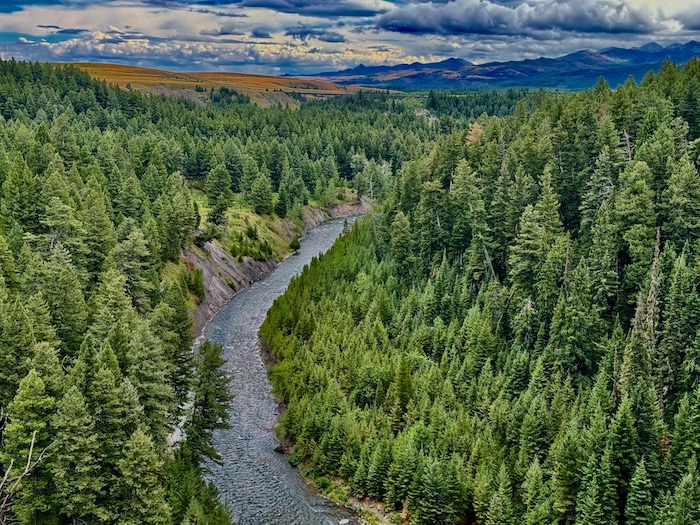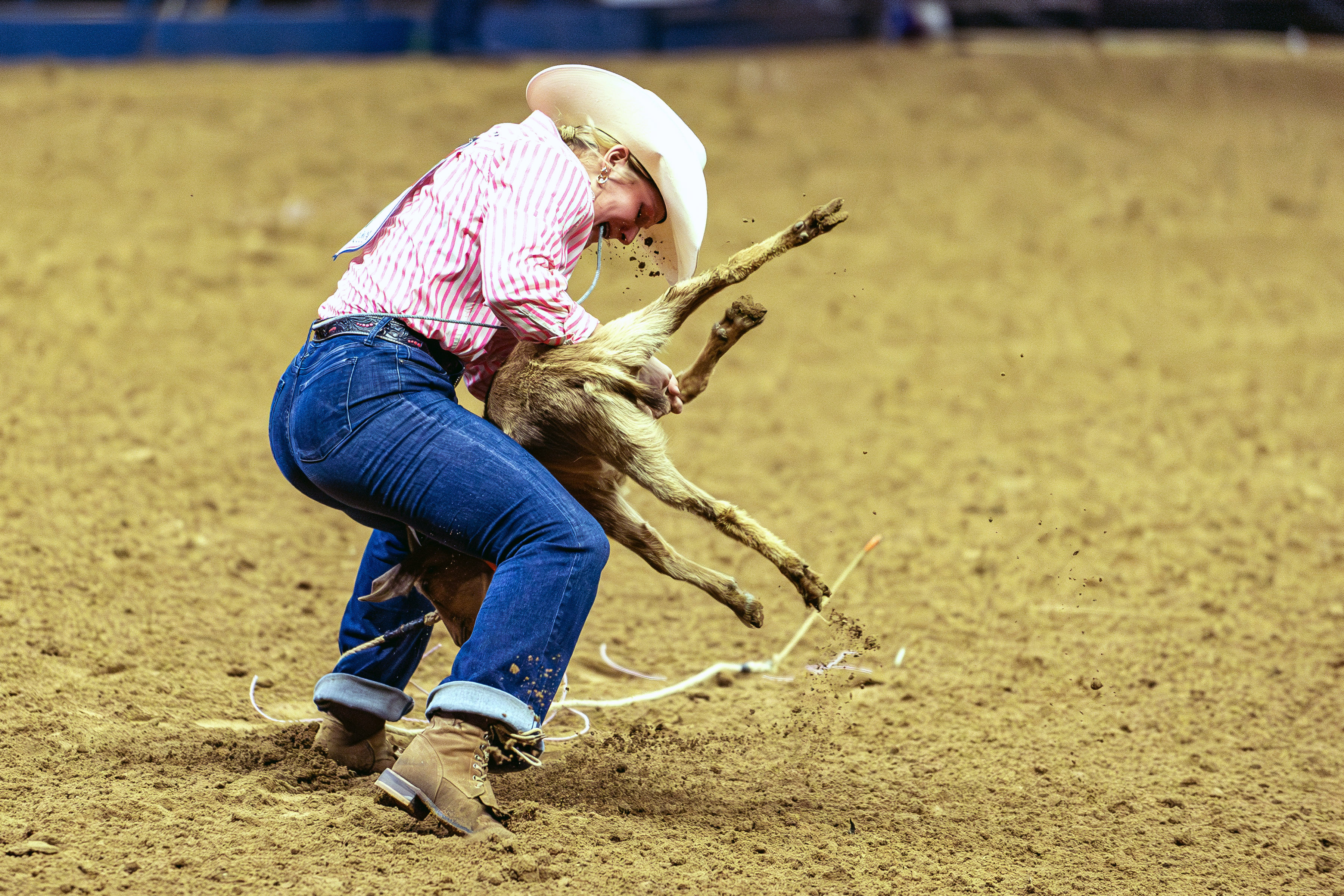Weekend Talk: Grizzlies in Glacier
Published 5:23 am Sunday, September 15, 2024

- Two Medicine River flowed serenely through this valley this summer when the Richardsons visited, but in 1967 when Mary was hiking alone in this same spot she was caught in a huge thunderstorm and met a moose on the trail. (Mary Richardson / American Press)
By Mary Richardson
August 13, 1967. That was the date when two young co-workers of mine were mauled and killed by grizzly bears. I was part of a horde of college kids working during the summer in Glacier National Park for minimum wage and the chance to go hiking in the mountains. But these two young women didn’t make it home.
Almost 60 years later, my husband, Joe, and I were getting off the Amtrak train, and East Glacier Lodge was right in front of me, again. It looked the same as it had back in 1967. In fact, it looked the same as it did when it was built in 1913 by the Great Northern Railroad to attract visitors to Glacier National Park.
Joe and I had come here for entirely different reasons. Joe, an antique car buff, wanted to ride in a historic “Glacier Red” bus up the dramatic mountainous incline of the “Going-To-The-Sun” Road. Myself, I wanted to put to rest my memories of those gruesome deaths and replace them with new memories of this majestic landscape.
I had high expectations for that summer of 1967. My father had seen me off at the Union Pacific station in St. Paul, Minn., and had surprised me with a gift of my first-ever hiking boots. They were made from smooth, brown leather, and I wore them hiking above the tree line, through mountain streams, and up above alpine lakes … until the night of August 13.
That night, while I was safe asleep in the dormitory for summer workers, grizzly bears attacked co-workers who had gone on overnight backpacking hikes into the wilds of the park.
Two of them were mauled to death. One was Michelle Koons from California. The other was Julie Helgeson, who, like me, came from a small town in southern Minnesota. Both were only 19, a year younger than I.
Back in those days, campers were not careful about garbage. It was just left anywhere, and it attracted animals, including bears. Garbage from one private concession was regularly thrown into a ravine near a campground. And this was the campground where Michelle Koons and her friends were sleeping when the first bear attacked. Her friends ran for the trees and climbed up, but Michelle’s sleeping bag zipper stuck and she couldn’t get out. In the book “Night of the Grizzlies,” author Jack Olsen recorded her last dreadful scream: “Oh, my God, I’m dead.” Julie had hiked in a different direction. She and her friends had gone over Logan Pass, planning to spend the night in the Granite Park Chalet, high in the mountains. But the chalet was full, so they were assigned to an overflow campsite area. Unlike Michelle, Julie was alive for hours after a bear dragged her away. She was finally found and brought back to the chalet, but she had lost too much blood and she died there.
I don’t remember how we found out about the attacks. It must have been lightning- speed word of mouth. And I don’t remember who told us we were being sent home. I just remember packing my boots and waiting to board the Union Pacific, heading east to St. Paul.
Only years later, after seeing the documentary “Night of the Grizzlies” and reading Olsen’s book, did I fully understand what had happened.
Much has changed since that terrible night. As summer employees in 1967, we had been warned about bears, but no one had been killed by bears in the entire history of the park. The instructions we were given were to climb trees or, if caught, play dead. We took the instructions seriously, but we didn’t think we would have to put them into practice.
Today, parks have strict “pack in, pack out” policies. Dumps have been eliminated. Trash cans are bear-proof, and there is off-the-ground storage available for backcountry hikers.
People are told over and over again not to feed the wildlife. Now bear spray is sold everywhere, but it hadn’t been invented in 1967.
During this trip, warnings about bears were ubiquitous. Huckleberries were ripe and the bears were feeding on them, so everyone was told to carry bear spray, even on the golf course at the lodge. The park closes trails when bear activity is too heavy, and two trails were closed while we were there. We, however, saw no bears.
I concentrated on making new memories. Once again, I was struck by the sheer grandeur of the mountains, known to people native to this area as “the backbone of the world.”
About 150 of the park’s named mountain peaks are more than 8000 feet high. The highest one is 10,479 feet.
The Amtrak package that our travel agent, Anne Rose, had found for us included two events to take us into the mountains. The first was a boat ride the length of the classic Two Medicine Lake, with an easy hike at the end leading to a waterfall and a pristine alpine lake. The second was the object of Joe’s desire — a trip on a historic Red Bus over Logan Pass on the Going-to-the-Sun Road.
Both the red buses and the road itself are kryptonite for antique car buffs. The red buses date back to 1936. They were manufactured by the White Motor Company (which led to much confusion when Joe talked about how “the red buses are White”).
The Going-to-the-Sun Road is even older than the buses. Construction began in 1921, was completed in 1932, and it is still the only road that traverses the park. It crosses the Continental Divide at Logan Pass, elevation 6,646 feet. The road is closed most of the year; opening dates depend on snowfall – this past winter the snowpack was 80 feet — but typically it is fully open by early July and closed in October.
The drivers of the red buses were known as “jammers” or “gearjammers” because the buses had standard unsynchronized transmissions. Shifting the manual gearbox into low to navigate the Going-to-the-Sun Road was pretty noisy. The noise quieted down in 1989 when the buses were fitted with automatic transmissions. In 1999, the Ford Motor Company rebuilt the engines for the entire fleet. Now they even have cup holders. So, while the rest of us looked over the guardrails into the mountain’s abysses, Joe rode shotgun. I’m sure he was imagining himself jamming gears as we climbed the mountain.
I also had a bone to pick with an elk. One afternoon in that summer of 1967 there were no other hikers around, so I ignored the No. 1 rule — don’t hike alone — and took off. The weather was lovely, the sun was warm, and I wasn’t worried about the thunder I heard far in the distance. Then the trail turned a corner at the edge of a canyon and two things happened.
The storm that I had thought was a long way off was on top of me. Dark, deadly-looking clouds with lighting were racing up the canyon, right towards me. I turned another corner and saw the elk. He towered above me. His antlers looked like they were five feet across. I cast my eyes to the ground and backed up, just as the sky opened up. The elk didn’t follow me.
So, of course, I talked Joe into redoing that hike with me. I wanted to look for elk. Instead, I saw only dogs. Two had followed us from the lodge. A woman had four more on leashes. Just as I remembered, at a certain corner the entire vista of the canyon opened before us. The river at the bottom looked blue and friendly. No elk. A memory was displaced.
On this trip, I did indeed make new memories. I’m remembering the mountains reflected in the clear, still, cold waters of Two Medicine Lake. I’m thinking about the heroic efforts of the men who built the Going-to-the-Sun Road. I’m imagining Joe as a gearjammer, laughing as he grinds the gear into low to power his red bus over Logan Pass. In a snowstorm.
But I still have my old memories, too. I remember the night of the grizzlies, and I can still imagine the horror experienced by those two 19-year-old girls as they were mauled to death.
What happened to them changed the park’s policies. It changed how the park manages interactions between man and animals. Because of Michelle and Julie, the world of hikers is now safer. May their souls rest in peace and rise above those majestic mountains, in glory.





